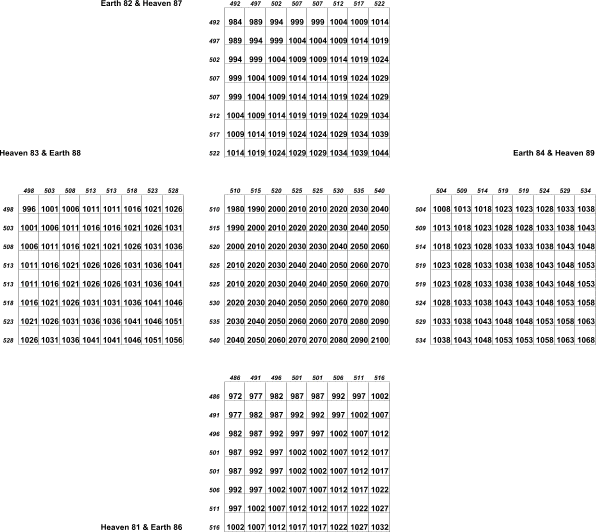Set One
(derived from columns with base numbers 1 to 10)

Here are the nine complete sets of five tables.
Set One
(derived from columns with base numbers 1 to 10)

Set Two
(derived from columns with base numbers 11 to 20)

Set Three
(derived from columns with base numbers 21 to 30)

Set Four
(derived from columns with base numbers 31 to 40)

Set Five
(derived from columns with base numbers 41 to 50)

Set Six
(derived from columns with base numbers 51 to 60)

Set Seven
(derived from columns with base numbers 61 to 70)

Set Eight
(derived from columns with base numbers 71 to 80)

Set Nine
(derived from columns with base numbers 81 to 90)

Now we are ready to take the final step in this mathematical marathon.
Third step
or return to the First step (second time around)
© Ken Taylor 2006